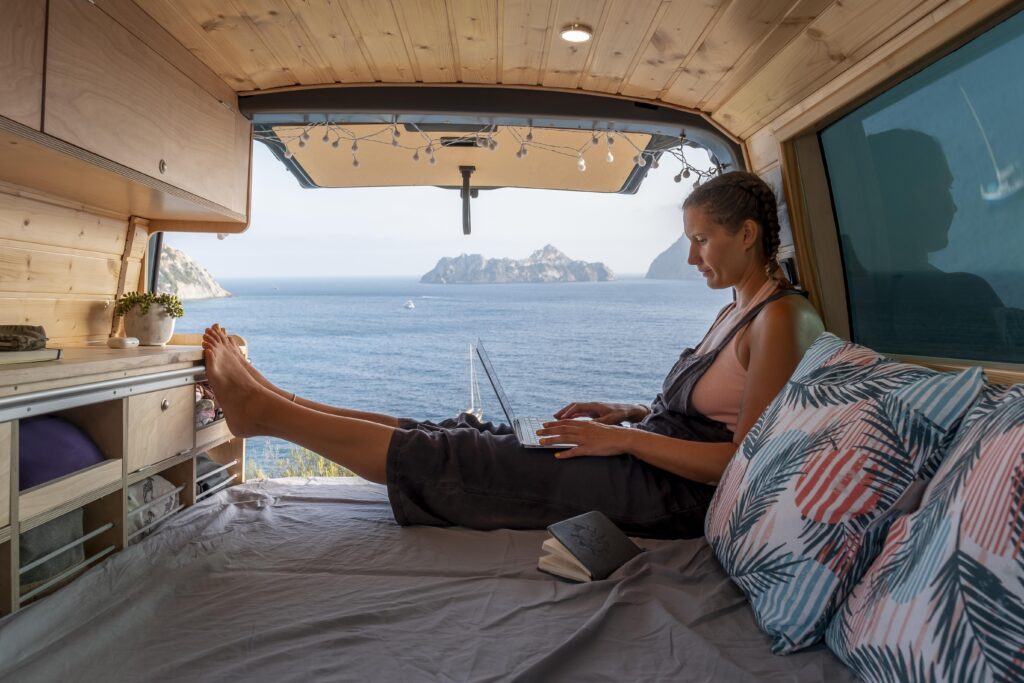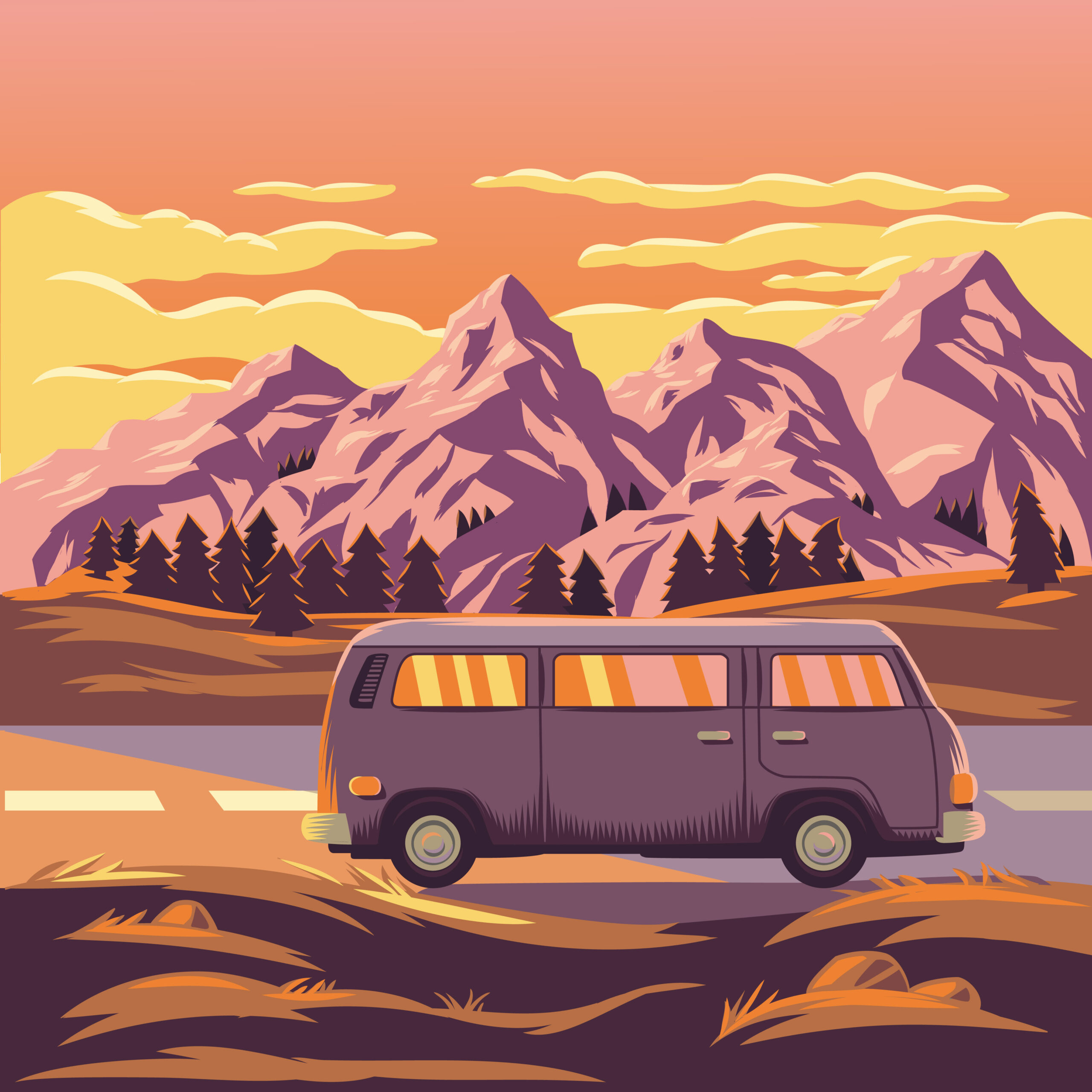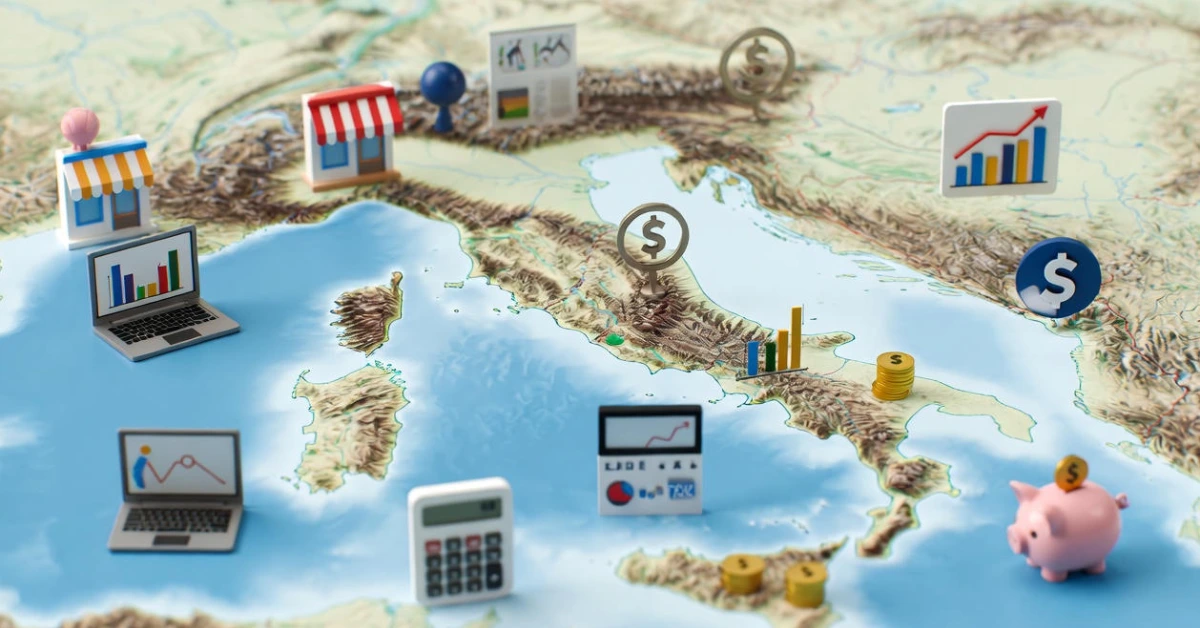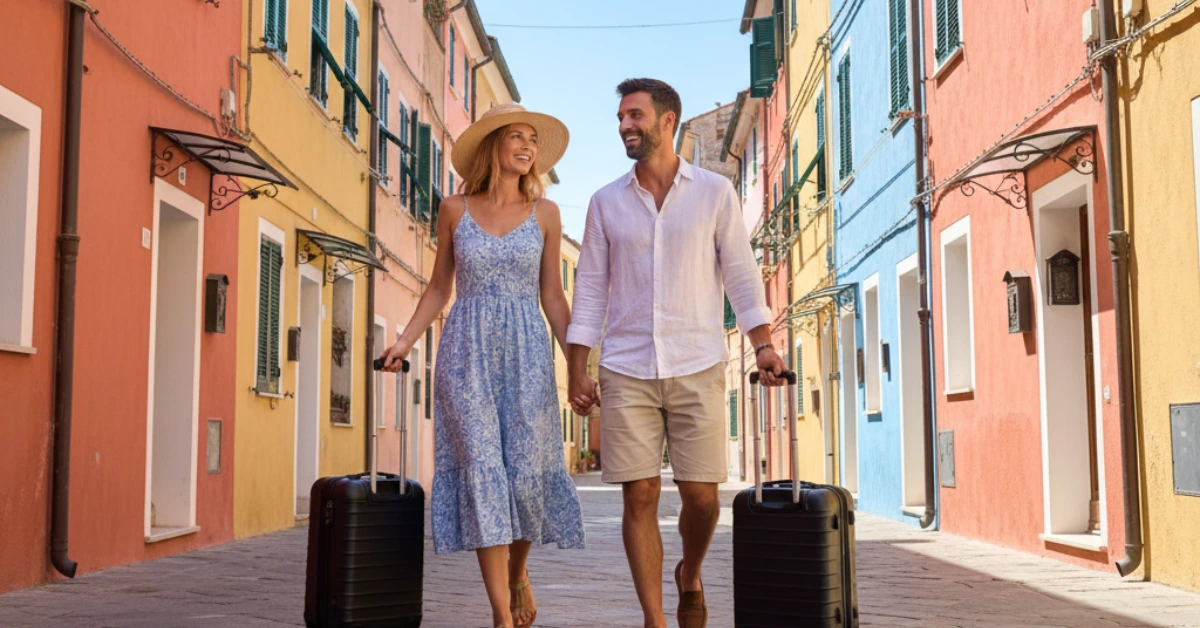When people consider Italy, they think of famous cities, art, and history. But there is another side of Italy, too, one that you discover not by adhering to a plan, but by adhering to the open road. Van living in Italy is not so much a way to travel, but a way of life that mixes adventure, simplicity, and the freedom to do things on your terms.
For most visitors today, taking the van life route is not only about pinching pennies. It’s about seeing Italy differently, from the blue sea along the Amalfi Coast to the secluded hamlets hidden among hills and vineyards.
Table of Contents
ToggleA Different Side of Italy
Van travel allows you to glimpse the corners of Italy that others ignore. Southern Italy, for example, is a more real and traditional experience, off the beaten path. There are roadways with narrow streets that wind to small towns where life moves at a slower pace. Wild camping is most often possible beyond the cities, and the breathtaking vistas remain long after you are gone.
It’s not only about well-known sights like the Tower of Pisa or the Amalfi Coast. If you experience van life, it opens the door to free camps, peaceful di sosta stops, and unexpected discoveries like natural hot springs hidden in the countryside or small markets full of local flavors.
Planning Your Trip
Italy is one of the most rewarding countries in Europe for van life travelers, offering a compact concentration of cultural wealth, natural beauty, and good infrastructure. To fully enjoy the experience and avoid possible negatives, however, it’s worth planning and acquainting yourself with the practicalities of campervan touring in this diverse and historic country.
A highlight for van travelers in Italy is the prevalence of official camper parking areas, or aree di sosta. They can be found throughout the country, from rural towns to coastal locations, and are officially established to accommodate motorhomes. While some are free, most offer minimal facilities such as electricity, water fill-ups, and waste disposal for a modest charge, typically ranging from €5 to €15 overnight. These areas are usually safe, well-located, and managed by local authorities.
Wild camping, while officially under national and regional authority, is commonly tolerated in more remote or rural areas of Italy. Those who choose to camp outside campsites are understood to do so quietly and considerately. This translates as not going into protected nature reserves, private property, and town centers, and minimizing noise and trash. Local regulations must be checked in advance, as the regulations and enforcement practices vary significantly from region to region.
One of the most important considerations for anyone planning to travel in Italy by van is the size of the vehicle. Many of Italy’s ancient towns and villages, particularly in regions such as Tuscany, Liguria, and Sicily, feature narrow, steeply graded roads and tight corners that are difficult to navigate in large motorhomes and campervans. A smaller, more compact van can significantly improve mobility, reduce the risk of road access issues, and make it easier to park in small spaces.
Technology plays a very significant part in the success of van life adventure. Some free mobile apps, such as Park4Night, Campercontact, and iOverlander, provide extensive, user-generated information on overnight parking, refill stops, and service stops. They generally include up-to-date reviews, GPS coordinates, and photos. Offline maps are also a good idea, particularly in hilly or countryside areas where the mobile signal may be weak.
Cost planning is yet another essential aspect. Aside from parking fees, travelers would have to factor in gasoline prices of which in Italy can vary from €1.80 to €2.00 per liter, and toll roads, whose costs can also vary from €10 to €30 per journey based on the distance and location. Water refill and waste dump stations are sometimes included in parking facilities, but at times also impose small costs of around €1 to €3 when independently availed of.

Legal Regulations for Van Life
While Italy is a welcoming environment for van travel, visitors need to be aware of some legal and environmental regulations that determine the terms of overnight parking, vehicle access, and insurance, respectively. Familiarity with these regulations is important to prevent fines, ensure personal security, and minimize the environmental impact of your tour.
Free camping in the sense of camping outside campsites is not permitted in Italy. This restriction is strongest around beaches, national parks, and towns. Local councils may adopt their law, and offending is punishable with up to €500 fines. In rural or far-off countryside areas, though, the police are more lax, as in these regions officials are more open to being understood, as long as visitors act quietly.
What concerns the overnight parking, the demarcation between camping and parking enters the picture. Overnight sleeping in your van and parking are permitted in most places across Italy, as long as the vehicle remains in normal parking mode—that is, without opening awnings, setting up tables and chairs, or displaying other signs of a campsite. Once you begin setting up outdoor gear, your visit can be considered “camping” rather than simple parking, and that could possibly require specific permission depending on where you are.
Foreign-registered van visitors should also ensure their insurance policy is effective in Italy. Short-term visitors from the EU typically have automatic coverage under European green card motor insurance policies. However, longer-term residents or those arriving from outside the EU should verify their policy specifically insures Italy and the broader European Union. Additional coverage may be required in some circumstances to comply with Italian traffic laws and insurance rules.
Environmental protection is another important consideration. In national parks, nature reserves, and other protected sites, strict controls over access, car parking, and litter disposal are often in place. These will often be advertised, and culprits may be fined or excluded from access in the future. Visitors ought to consult with local park administration or tourist information centers before visiting sites of special ecological interest.
Budget-Conscious and Adaptable
One of the advantages of van life is being in charge of your budget. With a mix of free camps, di sostas, and the occasional paid park, travelers can have expenses at manageable levels without missing out on Italy’s highlights.
Travelling in a van also provides you with greater flexibility. You may stay longer in places you love and depart when you want to, a luxury compared to hotel travel.
Yet, van travelling also provides unexpected advantages:
- Meeting locals who invite you to share a meal.
- Watching the sunset from a quiet hill with no other people.
- Finding hot springs by chance on a back road in Tuscany.
- Spend more time on Italy’s hidden gems, not just its popular attractions.
Some Tips
- Despite van life in Italy being freedom-granting, it is also preparation-involving:
- Respect parking rules and local communities.
- Leave no trace when wild camping at all times.
- Support local businesses along the way, whether shopping at local farms or dining at family restaurants.
- Kindness and respect open many doors in Italy. Throughout much of southern Italy and smaller towns, there is a hospitality that runs deep, and strangers are frequently greeted with open arms.
So…
Choosing van life in Italy is choosing a more intense experience of the country. You will not simply visit Italy; you will live there, day by day, learning its numerous faces at your rhythm.
Depending on whether you wake up to blue water, drive by vineyards bathed in the golden colors of sunset, or park for the night in a hilltop town square, the experience will remain long after you return home.
Finally, van life in Italy is more than a method of travel. It’s a means of living in Italy simply, freely, and completely.
Would you like to read more about similar topics? Then, take a look at our related articles here: Buying a house in Italy: What to be careful about, Find the best prefab home for you in Italy and Expat Guide to Italian Utilities 2025: Paying Your Bills Smart.




